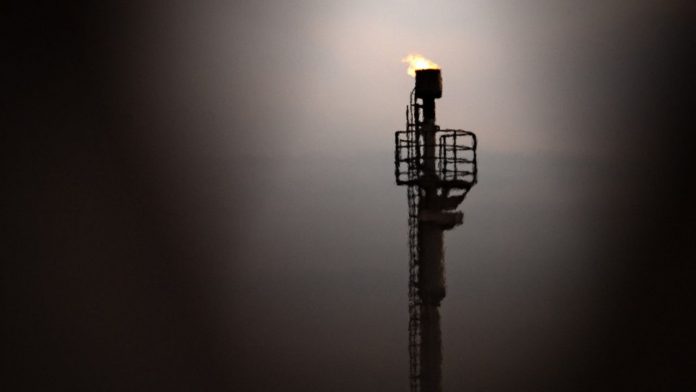Posted Sep 30, 2022 12:17 PMUpdated on Sep 30, 2022 at 12:18
It is an activity without industrial interest and what is more is very polluting. Natural gas flaring, which burns excess gas from oil and gas wells, releases five times more methane than previous estimates, warns a new study which has just been published in the magazine “Science”.
Methane is a powerful greenhouse gas. According to scientists, it is, after carbon dioxide, the second gas that contributes the most to climate change. Its lifetime in the atmosphere is shorter than that of CO2, but its warming power is much higher.
A research team, led by Genevieve Plant at the University of Michigan, investigated the natural gas flaring activity practiced in two sedimentary basins located in Texas: the Permian Basin and the Eagle Ford Shale. She also looked at the air around the Bakken formation, a geological site rich in oil and gas, straddling the states of North Dakota and Montana. These areas alone concentrate 80% of American natural gas flaring activities.
The results were final. While the fossil fuel industry and the US government assume that constantly burning flares destroy methane – the main component of natural gas – with an efficiency of 98%, researchers say this rate is actually only by 91.1%. That is methane emissions in the United States five times higher than officially published data.
wear and tear problems
“We used a small aircraft equipped with extremely sensitive probes that measure the concentration of methane and carbon dioxide downwind of the flares,” explained Genevieve Plant. “During this aerial survey, we took approximately 300 separate samples of air from flare stacks in the regions that use the most natural gas flaring in the United States,” she adds.
The research team found that while most flares were operating at 98% efficiency, other flare stacks showing signs of wear were 60% efficient, with no count the 3 to 5% of extinguished flares that release unburned gas into the atmosphere.
Exposure to a mixture of pollutants
The environmental damage is substantial. On the other side of the Atlantic, the flaring of natural gas represents a warming potential equivalent to the introduction of 2.9 million additional cars each year, specifies the scientific document.
This activity, carried out essentially at a loss since the natural gas burned is not associated with any productive process, is also harmful to health. In the United States, it directly affects the air breathed by people who live within a radius of 5 km around the three basins concerned. “Unlit and partially burning flares can expose frontline populations to a mix of associated pollutants that pose risks of acute and/or chronic health effects,” the authors write.
World fight
According to this study, there are several ways to mitigate the harmful effects of this practice. Among them, reducing the volume of flaring activity, increasing the efficiency of flares or even storing and then reusing gas to supply electricity to other equipment.
Globally, the stakes are high. They are first of all economic: the World Bank estimates that the gas burned each year, ie 144 billion cubic meters, could supply all of sub-Saharan Africa with energy. They are obviously also climatic: “Due to the enormous warming potential of methane, it is essential to limit this super-pollutant to mitigate the worsening of the global climate emergency”, warns the study published in “Science”. .
The global fight against methane was officially launched at COP 26 last year. At the call of the United States, more than 80 countries promised that they would tackle head-on the emissions of this gas, with the objective of reducing them by 30% by 2040. Europe has also presented a plan to reduce its methane emissions by 80% by 2030. Problem: several big polluters like China, Russia and India, have so far refused to join the collective effort.
Russia accused of burning the gas it no longer sells to Europeans
Flaring of natural gas is said to have increased in Russia since the outbreak of war in Ukraine and the rain of sanctions that fell on Moscow. A BBC investigation revealed at the end of August that nearly 4.34 million cubic meters of natural gas were burned every day near the Russian border with Finland. A gas initially intended for the German market. This massive flaring would release approximately 9,000 tons of CO2 equivalent per day.
With AFP













